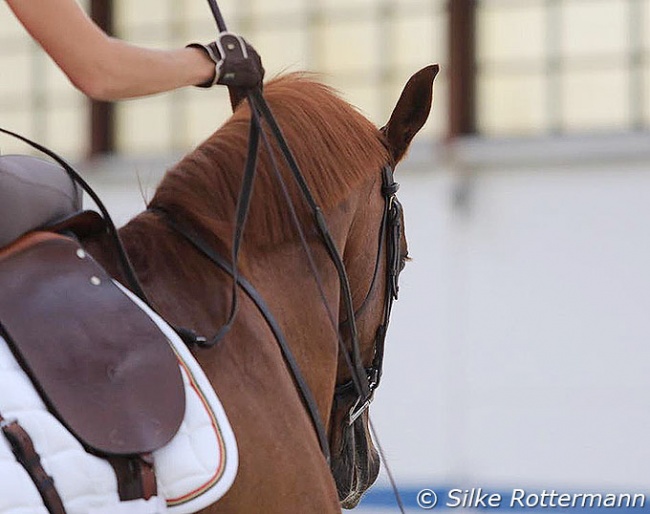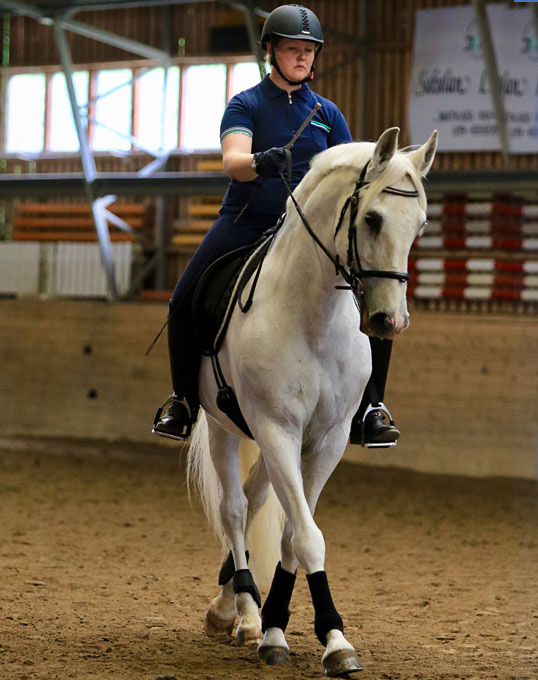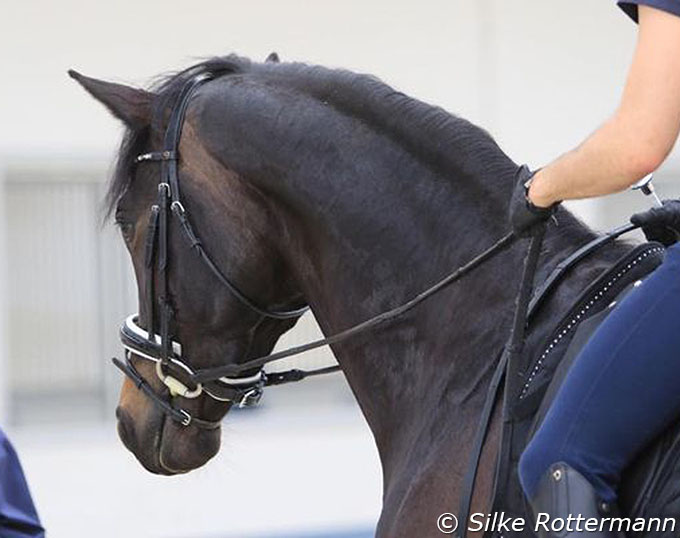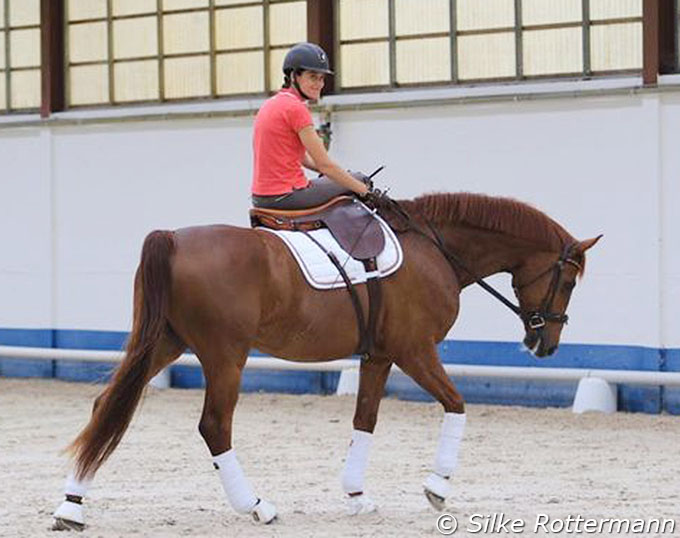
Walk is a very useful gait when preparing the horse for collection, because it allows to prepare and introduce exercises in balance, relaxation and activity. It is a skill to ride walk well in a good rhythm with different activity levels. On the other hand walk also quickly reveals errors in training. The rider can more easily notice tension in the horse’s back and neck because it is easy to sit relaxed in the walk.
The quality of contact is decisive for the success of walk exercises, because the horse needs to be comfortable with the contact and he needs to be able to move the neck in the walk, especially if the frame is longer and lower. Between collection exercises it is useful to allow the horse to stretch forward with a light contact. This helps the rider to feel the movement of the back and check that the horse still thinks forward through the whole body.
Walk Exercise for collection
When horses can do travers easily, we can introduce this exercise on a circle. It is also helpful for horses that are already familiar to collection, but have difficulties finding the lift in the ribcage.

upwards touching indirect rein aid. This helps
the horse to maintain open frame and find the
lift in the front end as the front legs cross.
Here a gentle touch of a whip is useful and you want to see a reaction where the horse is just flexing the joints, not stepping more towards inside or outside of the circle track in travers. The timing of the touch is crucial: You touch when the inside hind leg is still on the ground, but is about to lift. When the horse is ok with this, ask the horse to do the same from using your inside leg. It is useful to take your time to help the horse understand that your inside leg close to the girth can lead to an activation of the hind leg.
Once this is clear and easy for the horse, we add the indirect outside rein that helps the horse to make the circle smaller. The rein also helps the horse to keep the balance and the lifting rein is supervising the frame, if the horse is trying to close the frame. The rein must think slightly forward and it is used with a light lifting touch towards the ear of the horse on the opposite site, without crossing the midline of the neck. It´s just a touch, then you let the hand get back to the normal position until you need the lifting effect again. You can think the lifting rein to act as a kind of half halt that prepares the horse to find direction in the movement.

and the horse is relaxed, the neck muscles remain relatively flat.
This exercise puts the horse in a position where the collection can be developed really precisely, we use a bending that doesn´t block the horse’s body and the exercise refines the rider’s skills to balance and activate the horse in walk. We must feel how much to ask and when it´s best to just let the horse walk a few steps more. Always remember to change the frame often and give the horse tiny breaks. The way the horse comes out of the collection defines the quality of your preparation for collection and for this, walk is very informative.

helps the rider to have a good connection with the horse
- Text by Niina Kirjorinne - Photos © Silke Rottermann
Related Links
Functionality in Equitation: Skin Damage from Leg Aids
Functionality in Equitation: The Forward Thinking Hand
Functionality in Equitation: Balance, the Key in Equitation
Functionality in Equitation: Aim for Good Movement
Functionality in Equitation: Fascia and Movement
Functionality in Equitation: Fascia Treament - Surface Has a Deep Effect
Meet Niina Kirjorinne, Classical Dressage Rider and Physiotherapist
Effect of Noseband Positioning to Fascial and Neural Dynamics of the Head